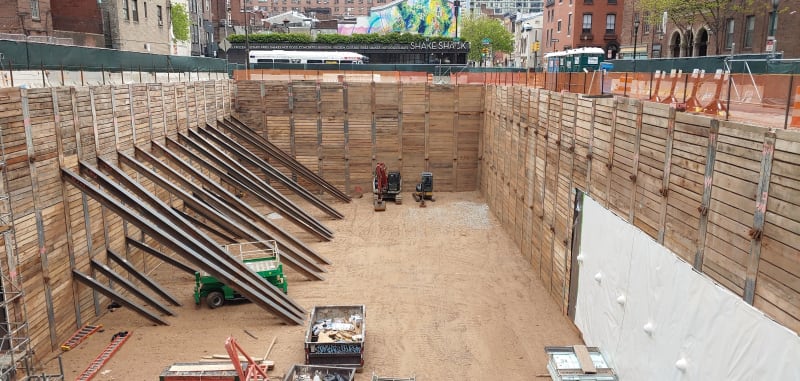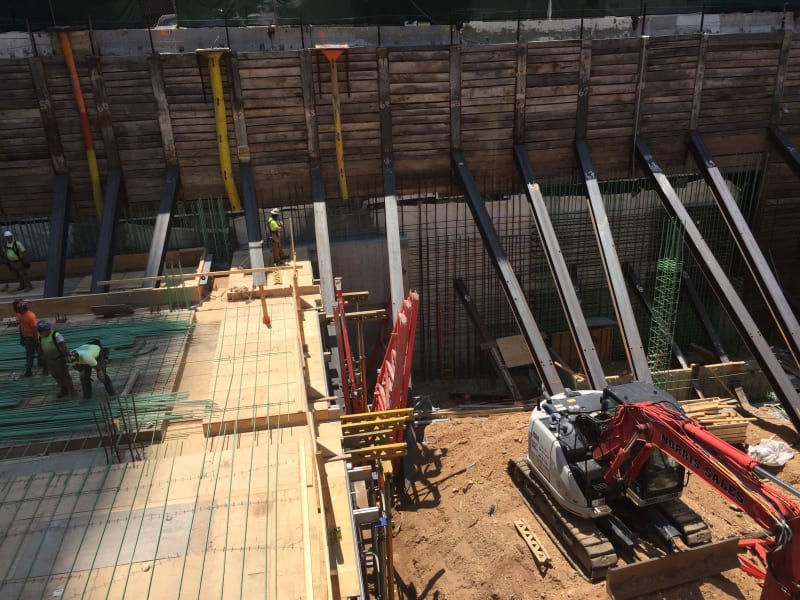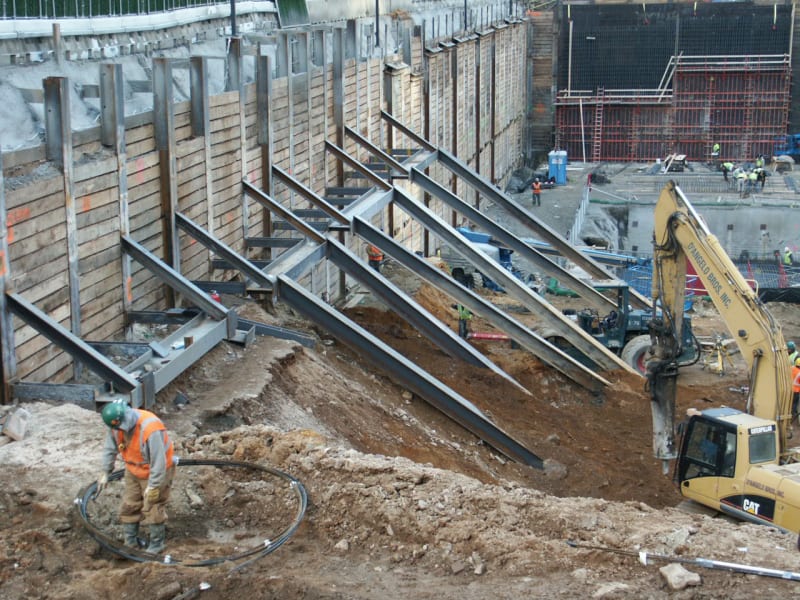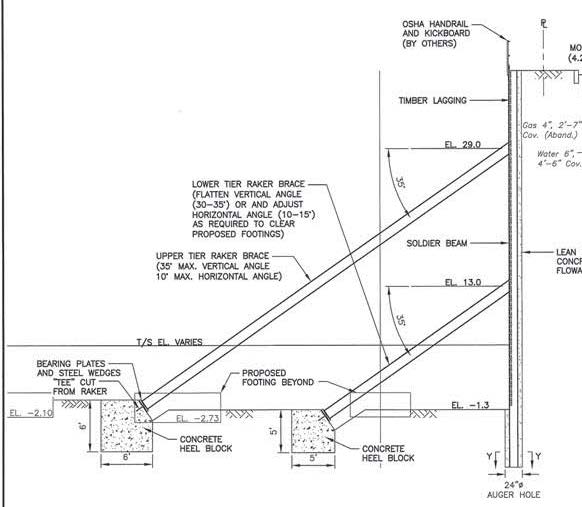-
1
- #1
EngMan40
Civil/Environmental
- Jan 11, 2009
- 66
Neighbors across street don't like tiebacks below their property so I am thinking 3 levels of rakers with reaction blocks, any precautions/issues to look out for given the depth of excavation? top 20 ft is medium dense fill/natural, bottom 20 ft is good dense to very dense natural sand and gravel. If you have some details to share, photos of this being done in the past that will be great.





